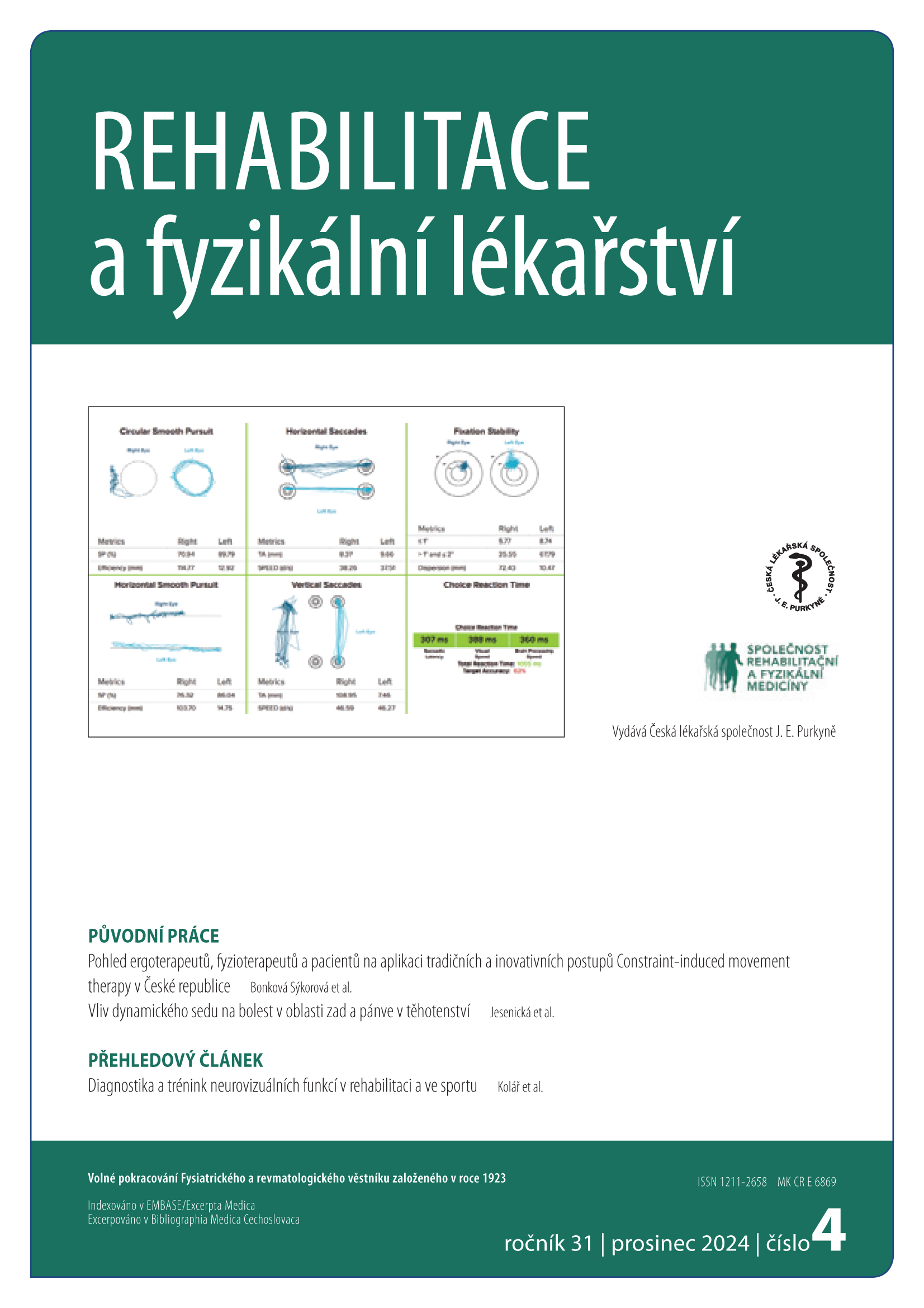Diagnostika a trénink neuro-vizuálních funkcí v rehabilitaci a ve sportu
Abstrakt
Senzorická integrace se podílí na optimálním provedení pohybu. Při opakovaném neideálním příjmu informací z okolního prostředí může docházet k narušení procesu motorického učení. Dominantním lidským smyslem je zrak. Vizuální informace jsou na úrovni centrálního nervového systému (CNS) integrovány se vstupními informacemi z jiných smyslových orgánů a kontinuálně ovlivňují motorickou činnost. V současné době se v oboru rehabilitace i ve sportu používá pojem neuro-vizuální systém (NVS), který zohledňuje propojení osy oči-mozek-tělo. Článek shrnuje recentní informace o NVS, a představuje možnosti diagnostiky NVS v klinické praxi jako je testování zrakové ostrosti, motility očí a blízkého bodu konvergence. Na základě dostupné literatury jsou popsány indikační skupiny pacientů, u kterých by mohl být neuro-vizuální trénink (NVT) efektivní součástí rehabilitace i možnosti využití u sportovců v rámci sportovního tréninku. Součástí publikace jsou dvě kazuistiky, které demonstrují vyšetření NVS a využití NVT v klinické praxi u adolescenta s poruchou pozornosti a vrozenou diplopií, a u mladé tenistky s bolestmi hlavy.

